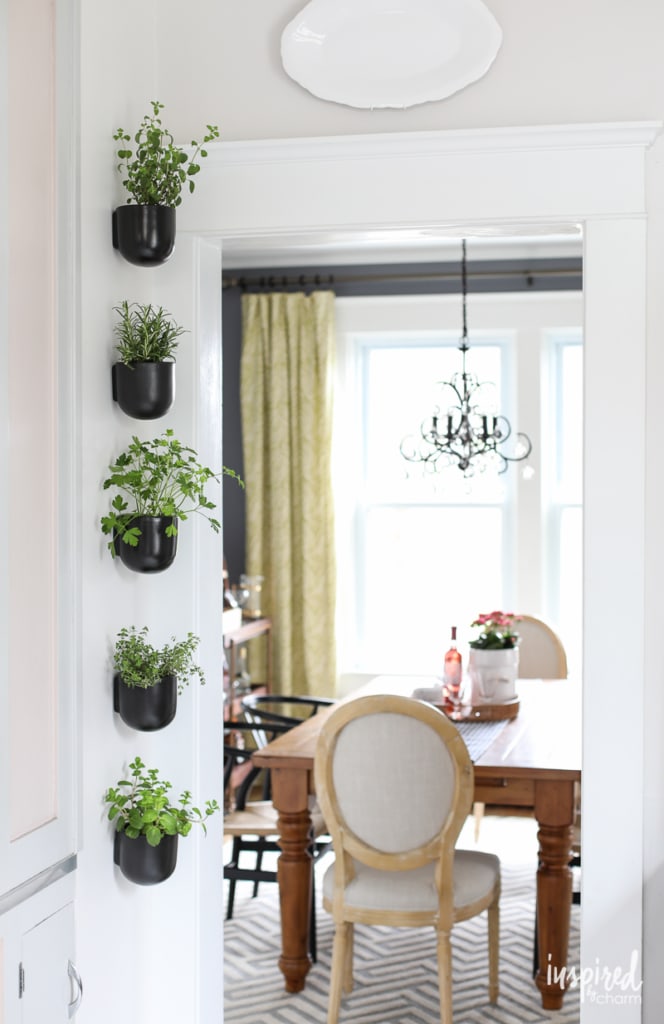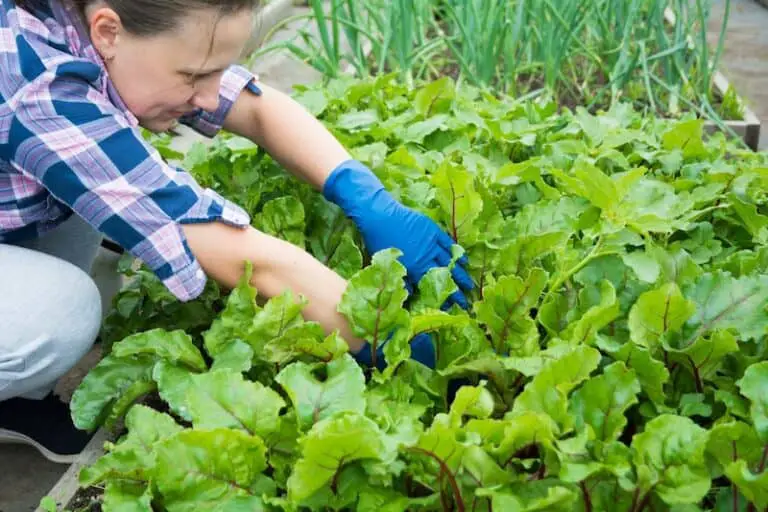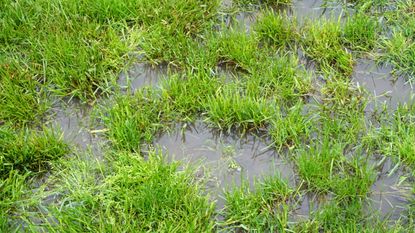How To Create A Vertical Herb Garden In Your Kitchen: Easy Steps
Install a vertical herb garden by using wall-mounted planters or hanging baskets in your kitchen. Choose herbs that thrive indoors.
Creating a vertical herb garden in your kitchen is a great way to maximize space and ensure fresh herbs are always at hand. Start by selecting a sunny spot in your kitchen, ideally near a window. Use wall-mounted planters or hanging baskets to save counter space and add a decorative touch.
Opt for herbs like basil, mint, and parsley, which thrive indoors and are easy to care for. Regular watering and occasional pruning will keep your garden healthy. A vertical herb garden not only enhances your cooking but also brings a touch of greenery to your kitchen.
Benefits Of A Vertical Herb Garden
Creating a vertical herb garden in your kitchen offers numerous advantages. Not only does it provide easy access to fresh herbs, but it also optimizes space. This innovative garden method enhances your kitchen’s aesthetics and functionality.
Fresh Herbs At Hand
With a vertical herb garden, you can have fresh herbs at your fingertips. Imagine the convenience of plucking fresh basil or mint while cooking. Fresh herbs enhance the flavor of your dishes.
Additionally, growing your own herbs ensures they are free of pesticides. You know exactly what goes into your plants. This promotes a healthier lifestyle.
Having fresh herbs also saves money. Store-bought herbs can be expensive and often go to waste. A vertical herb garden provides a continuous supply of fresh herbs.
Space-saving Solution
A vertical herb garden is a space-saving solution. Traditional gardens require ample space. But vertical gardens make use of vertical space, ideal for small kitchens.
Mounting a vertical garden on a wall or a door frees up counter space. You can also use shelves or hanging pots. This keeps your kitchen organized and clutter-free.
Moreover, vertical herb gardens add a touch of green to your kitchen. They create a pleasant and inviting atmosphere. Greenery promotes a sense of well-being and peace.
| Benefit | Description |
|---|---|
| Fresh Herbs | Easy access to fresh, pesticide-free herbs |
| Space-Saving | Optimizes vertical space, ideal for small kitchens |
| Cost-Effective | Reduces the need to buy store-bought herbs |
- Fresh herbs at your fingertips.
- Space-saving solution for small kitchens.
- Healthier and pesticide-free herbs.
- Cost-effective and sustainable.
- Enhances kitchen aesthetics.

Credit: www.alairhomes.com
Choosing The Right Location
Selecting the right spot for your vertical herb garden is crucial. The location impacts plant health and growth. Let’s explore key factors to consider.
Lighting Considerations
Herbs need ample light to thrive. Place your garden near a sunny window. South-facing windows are ideal. They provide 6-8 hours of sunlight daily.
If natural light is limited, use grow lights. LED grow lights are energy-efficient. They mimic sunlight and support plant growth. Ensure the lights are adjustable for best results.
Accessibility
Your herb garden should be easy to reach. This encourages regular use and maintenance. Install it at a comfortable height. Avoid placing it too high or too low.
Ensure easy access to water. Keep a small watering can nearby. This makes watering quick and convenient. Regularly check soil moisture to keep herbs healthy.
Selecting Suitable Herbs
Creating a vertical herb garden in your kitchen can be a fun project. But selecting the right herbs is crucial. Some herbs thrive indoors, while others do not. Here is a guide to help you choose the best herbs for your indoor garden.
Best Herbs For Indoors
Some herbs grow well indoors. These herbs need less sunlight. They also require minimal care. Here are the top choices:
- Basil: Needs moderate light. Great for pasta and salads.
- Mint: Grows quickly. Perfect for teas and desserts.
- Chives: Requires moderate light. Ideal for soups and garnishes.
- Parsley: Needs low to moderate light. Essential for garnishes and sauces.
- Thyme: Grows well with little care. Good for meats and stews.
Herbs To Avoid
Not all herbs are suitable for indoor growth. Some require more sunlight and space. Avoid these herbs for your kitchen garden:
- Cilantro: Needs full sunlight. Often bolts indoors.
- Dill: Requires a lot of space. Not ideal for small kitchens.
- Fennel: Grows very large. Needs full sun and space.
Use this guide to select the best herbs for your indoor garden. Happy gardening!
Materials And Tools Needed
Creating a vertical herb garden in your kitchen is an exciting project. It brings fresh herbs within arm’s reach and adds a touch of greenery to your space. To get started, you need to gather some essential materials and tools. This section will guide you through the supplies you need and some optional extras to enhance your garden.
Essential Supplies
To create your vertical herb garden, you’ll need the following materials:
- Wall-mounted planters: These hold your herbs and attach to the wall.
- Potting soil: Choose a high-quality soil for best results.
- Herb seeds or seedlings: Pick your favorite herbs like basil, parsley, or thyme.
- Watering can or spray bottle: Keep your herbs hydrated.
- Wall anchors and screws: Secure the planters to the wall safely.
- Drill: You’ll need this to make holes for the wall anchors.
Optional Extras
These extras can make your vertical herb garden even better:
- Grow lights: Provide extra light for your herbs, especially in low-light kitchens.
- Self-watering planters: These make watering easier and more consistent.
- Decorative markers: Label your herbs for a personal touch.
- Fertilizer: Boost your herbs’ growth with some plant food.
- Pruning shears: Keep your herbs healthy by trimming them regularly.
With these materials and tools, you’re ready to build your vertical herb garden. Enjoy the process and soon you’ll have fresh herbs at your fingertips.
Step-by-step Installation
Creating a vertical herb garden in your kitchen is a fun project. Follow this step-by-step installation guide to get started. You’ll have fresh herbs at your fingertips.
Mounting The Structure
First, choose a sunny spot in your kitchen. It should be near a window.
Next, gather your materials. You will need a sturdy frame or a hanging rack. Make sure it can support the weight of the pots.
Use a tape measure to mark the spots for drilling. The frame should be level and secure.
Drill the holes and attach the frame or rack to the wall. Use strong screws and anchors for safety.
Arranging The Pots
Now, select your pots. Choose ones that fit well within the frame. They should have drainage holes.
Fill the pots with soil. Plant your herbs in each pot. Popular choices are basil, mint, and parsley.
Arrange the pots on the frame. Place taller plants on the top and shorter ones below. This allows all plants to get sunlight.
Water the plants lightly. Do this regularly to keep the soil moist.
| Step | Action |
|---|---|
| 1 | Choose a sunny spot |
| 2 | Gather materials |
| 3 | Mark spots for drilling |
| 4 | Attach frame/rack to wall |
| 5 | Select and fill pots |
| 6 | Arrange pots on frame |
| 7 | Water plants |
Enjoy your vertical herb garden. It’s a great way to have fresh herbs every day.

Credit: www.epicgardening.com
Planting Your Herbs
Planting your herbs in a vertical garden can be fun and rewarding. With the right steps, your kitchen will be full of fresh, fragrant herbs. Follow these easy steps to start planting.
Preparing The Soil
Good soil is key to healthy herbs. Use a high-quality potting mix. Ensure the soil is well-draining. You can mix in some perlite or vermiculite for better drainage. Adding organic compost boosts nutrients.
| Ingredient | Purpose |
|---|---|
| Potting Mix | Base for planting |
| Perlite/Vermiculite | Improves drainage |
| Organic Compost | Increases nutrients |
Transplanting Tips
Transplanting herbs is easy if you follow some tips. First, water the herbs before moving them. This reduces shock. Gently remove the herb from its pot. Loosen the roots if they’re tangled.
- Water the herbs well.
- Remove the herb from its pot.
- Loosen the roots gently.
- Plant in the prepared soil.
Place the herb in the new soil. Cover the roots completely. Press the soil around the plant to secure it. Water the plant lightly after transplanting.
Now your herbs are ready to grow in your vertical garden. Enjoy the freshness and flavor they bring to your kitchen!
Maintaining Your Herb Garden
Maintaining your herb garden is key to healthy, thriving plants. A little attention will yield fresh herbs for your kitchen. Let’s dive into the essential aspects of herb garden care.
Watering Schedule
Watering your herb garden correctly is crucial. Herbs need a balance between dry and moist soil. Follow a watering schedule for best results:
- Daily Check: Check soil moisture daily with your finger.
- Watering Frequency: Water once the top inch of soil feels dry.
- Water Amount: Water until it drains from the bottom.
Use a small watering can for better control. Overwatering can harm your herbs, so be cautious.
Pruning Techniques
Pruning keeps your herbs healthy and productive. Use these techniques for best results:
- Pinch Early: Pinch off the top leaves to promote bushy growth.
- Regular Trimming: Trim herbs regularly to prevent flowering.
- Sanitize Tools: Use clean, sharp scissors to avoid infection.
Pruning helps herbs focus energy on new growth. Your herbs will stay lush and full.

Credit: inspiredbycharm.com
Troubleshooting Common Issues
Creating a vertical herb garden in your kitchen is rewarding. But, you might face some common issues. Let’s look at how to solve them.
Pest Control
Pests can damage your herb garden. To control them, try these methods:
- Inspect your plants regularly for bugs.
- Use natural pest repellents like neem oil.
- Introduce beneficial insects like ladybugs.
- Keep the garden clean and remove dead leaves.
If pests persist, consider using a gentle insecticidal soap. Avoid harsh chemicals. They can harm your herbs and your kitchen environment.
Dealing With Overwatering
Overwatering is a common issue. It can cause root rot and kill your herbs. Here’s how to avoid it:
- Check soil moisture before watering. Stick your finger in the soil.
- Ensure your pots have good drainage.
- Water herbs only when the top inch of soil is dry.
- Use a spray bottle for light watering.
Signs of overwatering include yellow leaves and soggy soil. If you notice these signs, reduce watering immediately. Let the soil dry out before the next watering.
For better results, consider using self-watering pots. These pots control moisture levels automatically.
Frequently Asked Questions
How Do I Start A Vertical Herb Garden?
Begin by choosing a sunny spot in your kitchen. Use vertical planters or shelves to maximize space.
Which Herbs Are Best For Indoor Vertical Gardens?
Basil, parsley, mint, and thyme thrive indoors. They require minimal sunlight and care, making them ideal choices.
How Often Should I Water My Herbs?
Water herbs when the soil feels dry. Most herbs need watering about twice a week, depending on indoor humidity.
Conclusion
Creating a vertical herb garden in your kitchen is simple and rewarding. Enjoy fresh herbs at your fingertips daily. Save space and add greenery to your home. Follow these steps and watch your herbs thrive. Start your vertical garden today and enhance your culinary adventures effortlessly.
Happy gardening!







